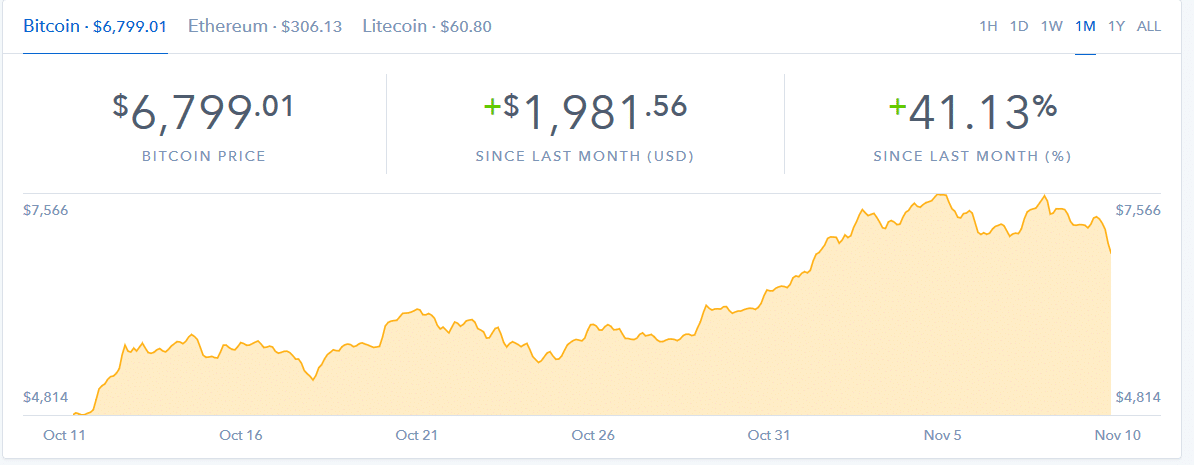Cryptocurrency trading in today’s volatile market requires a strategic approach to successfully navigate the highs and lows. With digital currencies experiencing rapid price fluctuations, having a sound trading plan is necessary for investors to capitalize on opportunities and mitigate risks. In this blog post, we will explore effective crypto trading strategies that can help you thrive in the unpredictable world of cryptocurrency trading. Whether you are a seasoned trader or just starting, these tips will provide valuable insights to enhance your trading skills and maximize profits.
Key Takeaways:
- Diversify your portfolio: Spreading your investments across different cryptocurrencies can help reduce risk in the volatile market.
- Set clear goals and stay disciplined: Establishing clear trading objectives and a strategy can help you navigate the ups and downs of crypto trading.
- Stay informed and adapt: Keeping up with the latest news and trends in the cryptocurrency market is necessary for making informed decisions and adjusting your strategies accordingly.
Fundamental Analysis for Cryptocurrency Trading
Macro-Economic Indicators
Trading in the volatile cryptocurrency market requires a deep understanding of macroeconomic indicators. Factors such as interest rates, inflation rates, and geopolitical events can significantly impact cryptocurrency prices. By monitoring these indicators, traders can make more informed decisions and better navigate the market.
Project and Token Fundamentals
Analysis of project and token fundamentals is crucial for successful cryptocurrency trading. By evaluating a project’s technology, team, community support, and use case, traders can assess its long-term potential and make smarter investment choices. Understanding the fundamentals of a project and token can help traders identify valuable opportunities in the market.
When analyzing project and token fundamentals, it’s important to consider factors such as the project’s whitepaper, roadmap, partnerships, and past performance. Paying attention to these details can give traders a clearer picture of the project’s credibility and potential for growth.
Technical Analysis in Crypto Trading
Chart Patterns and Trend Analysis
Trading in the volatile cryptocurrency market requires a solid understanding of chart patterns and trend analysis. By studying historical price movements, traders can identify patterns such as head and shoulders, double tops, triangles, and more. Trendlines can also help determine the market’s direction, whether bullish (upward) or bearish (downward).
Indicators and Oscillators
Utilizing indicators and oscillators is imperative for successful crypto trading. These tools help traders analyze market data and identify potential entry and exit points. Popular indicators include Moving Averages, the Relative Strength Index (RSI), and the Stochastic Oscillator. These indicators can provide valuable insights into market trends, momentum, and overbought or oversold conditions.
With a combination of technical analysis tools like indicators and oscillators, traders can make informed decisions and improve their chances of success in the unpredictable crypto market. Understanding how to interpret these tools accurately and integrating them into a comprehensive trading strategy is imperative.
Risk Management and Trading Psychology
Setting Stop-Loss and Take-Profit Targets
Many successful crypto traders emphasize setting clear stop-loss and take-profit targets. Setting stop-loss orders helps protect your investment by automatically selling your assets if the price drops below a certain point. On the other hand, take-profit orders allow you to lock in profits by selling when the price reaches a specific target. These predefined levels can prevent emotional decision-making during volatile market conditions.
Emotional Discipline and Decision-Making
Setting aside emotions and maintaining discipline are crucial aspects of successful crypto trading. Emotions like fear and greed can cloud judgment and lead to impulsive decisions that may result in losses. Having a well-defined trading plan and sticking to it can help avoid emotional trading mistakes. By managing emotions effectively, traders can make rational decisions based on strategy rather than impulse.
Psychology plays a significant role in trading success. Traders who understand their emotional responses to market fluctuations can better control their reactions. Recognizing behavior patterns and implementing strategies to counteract negative emotions can significantly improve trading outcomes. Developing a resilient mindset and focusing on long-term goals can help traders confidently navigate the crypto market’s unpredictable nature.
Building a Diverse Trading Portfolio
Once again, if you want to enhance your crypto trading success, focusing on building a diverse trading portfolio is crucial. Diversification can help reduce risks and maximize potential gains. For more detailed insights on profitable strategies, refer to the 10 Most Profitable Crypto Trading Strategies in 2024.
Asset Allocation and Diversification
The key to a successful trading portfolio is the proper asset allocation and diversification. By spreading your investments across different cryptocurrencies and assets, you can mitigate risks associated with market volatility while also maximizing your chances of profitability.
Incorporating Different Cryptocurrencies and Assets
Incorporating various cryptocurrencies and assets is crucial to building a diverse trading portfolio. Each crypto has its own market dynamics and growth potential. By incorporating a mix of established and emerging cryptocurrencies and other assets like stablecoins or tokens, you can create a well-rounded portfolio that is less susceptible to market fluctuations.
Cryptocurrencies are known for their volatility, and by including a variety of them in your portfolio, you can hedge against drastic price movements affecting a single cryptocurrency. This approach allows you to spread risk while potentially benefiting from the growth of different assets simultaneously.
Advanced Trading Strategies
- Leverage and Margin Trading
Advanced Leverage and Margin Trading
Leverage and margin trading play crucial roles in advanced trading strategies. Leveraging allows traders to amplify their positions in the market by borrowing funds, thus increasing potential profits. However, this also multiplies the risk, as losses can exceed the initial investment. Experienced traders must understand managing risk effectively when utilizing leverage and margin trading strategies.
- Arbitrage and High-Frequency Trading
Arbitrage and High-Frequency Trading
Arbitrage involves taking advantage of price differences of the same asset on different exchanges. High-frequency trading refers to using algorithms to execute many trades in a fraction of a second. These strategies require advanced knowledge of market inefficiencies and lightning-fast execution. To succeed, traders who engage in arbitrage and high-frequency trading must have access to cutting-edge technology and a deep understanding of market dynamics.
Another advanced strategy is pair trading, where traders buy and sell two correlated assets to capitalize on price divergences. This strategy relies on statistical models to identify pairs with historically stable relationships and profit from their convergence.
Trading Tools and Platforms
Choosing the Right Crypto Exchange
To succeed in the volatile crypto market, selecting the proper exchange that aligns with your trading needs is crucial. Security, trading pairs, fees, liquidity, and user experience should all be considered. Research various exchanges read reviews, and ensure the platform is regulated and has a solid reputation within the community before making your choice.
Utilizing Trading Bots and Software
Bots have become an invaluable tool for crypto traders looking to automate their strategies and capitalize on market opportunities efficiently. These automated programs can execute trades, track market movements, and manage risk around the clock, allowing traders to take advantage of trading opportunities even when they are not actively monitoring the markets. Selecting a reliable trading bot with a proven track record and customizing its settings to suit your trading style can enhance your overall trading performance.
Thorough research and continuous evaluation are imperative when choosing the right tools and platforms for crypto trading. Stay updated on the latest technological advancements and trends in the crypto space to make informed decisions that align with your trading goals and risk tolerance. By utilizing the right tools and platforms effectively, you can navigate the dynamic crypto market more confidently and improve your chances of success in the long run.

Staying Informed and Adapting to Changes
Keeping Up With Crypto News and Events
For successful crypto trading, staying updated with the latest news and events in the cryptocurrency market is crucial. Subscribing to reputable cryptocurrency news platforms, following influential figures on social media, and joining online forums can provide valuable insights into market trends and potential price movements. By closely monitoring regulatory developments, technological advancements, and market sentiment, traders can make informed decisions and adapt their strategies accordingly.
Adapting to Regulatory Shifts and Market Sentiments
News of regulatory changes or shifts in market sentiment can significantly impact the price and volatility of cryptocurrencies. To navigate these changes successfully, traders must remain flexible and responsive. Adapting quickly to new regulations, such as tax laws or restrictions imposed by governments, can help traders stay compliant and avoid potential losses. Additionally, monitoring market sentiment through social media, news outlets, and trading platforms can provide valuable insights into the collective mood of traders and investors.
This proactive approach to adapting to regulatory shifts and market sentiments can help traders mitigate risks and capitalize on emerging opportunities in the ever-evolving cryptocurrency market.
Final Words
Ultimately, success in the volatile world of crypto trading comes down to implementing the right strategies and tips to navigate the market effectively. By understanding the importance of risk management, staying informed on market trends, diversifying your portfolio, and utilizing technical and fundamental analysis, traders can be better equipped to make informed decisions and mitigate potential losses. It is crucial to remain disciplined, patient, and adaptable in trading cryptocurrencies, as the market can be unpredictable and rapidly changing. With the right mindset and a commitment to continuous learning and improvement, traders can increase their chances of success in this ever-evolving landscape of digital assets. Always research and never invest more than you can afford to lose.
FAQ
Q: What are some common crypto trading strategies?
A: Some common crypto trading strategies include day trading, swing trading, and holding. Day trading involves buying and selling cryptocurrencies simultaneously to take advantage of short-term price movements. Swing trading focuses on capturing gains over days or weeks by analyzing price trends. Holding, on the other hand, involves holding onto cryptocurrencies for the long term despite price fluctuations.
Q: How can I succeed in the volatile crypto market?
A: To succeed in the volatile crypto market, it’s necessary to practice risk management, do thorough research, diversify your portfolio, and stay updated on market trends. Set stop-loss orders to limit potential losses, only invest what you can afford to lose, and avoid making emotional decisions based on FOMO or FUD. Additionally, technical analysis, fundamental analysis, and market sentiment should be considered to make informed trading decisions.
Q: What are some tips for successful crypto trading?
A: Some tips for successful crypto trading include setting clear goals, developing a trading plan, sticking to a strategy that suits your risk tolerance and financial goals, and learning from successes and failures. Keep track of your trades, evaluate your performance regularly, and adjust your strategy as needed. Stay disciplined, patient, and resilient in the face of market volatility, and consider seeking advice from experienced traders or financial advisors.










